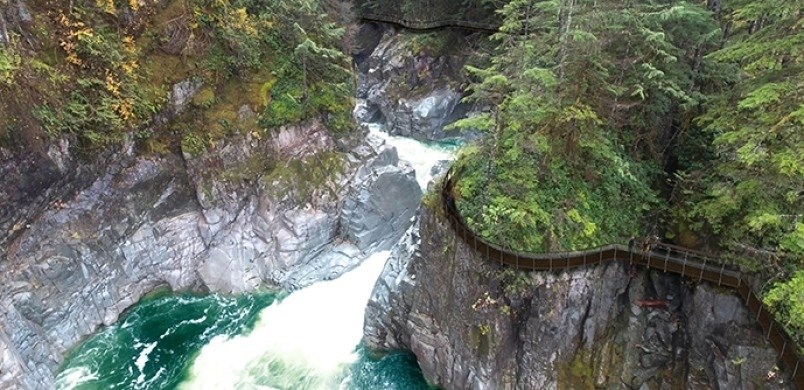A project that sparked a debate over increased tourism and whether Squamish should be kept "wild" has passed its greatest hurdle on the road to being approved.
During its meeting on March 17, the District of Squamish council voted unanimously in favour of granting third reading to a rezoning bylaw that would allow the Squamish Canyon project to move forward.
The passing of third reading sets up Squamish Canyon for adoption, which is typically granted, provided the developer meets conditions outlined by council.
In this case, this would include, among other things, executing an agreement with the Mamquam River Access Society to maintain two public accesses to the Mamquam River.
The lands in question are currently designated residential RS-1 and groundwater protection P-6 at the end of Mamquam River Forest Service Road near the Powerhouse Springs area.
The project consists of 800 metres of elevated boardwalk and roughly 200 metres of canyon walkway. The proposal includes washrooms, a children's play area, a concession stand and a small stage. During its second phase, two bridges would be added over the canyon as well as additional elevated boardwalks with lookout platforms.
A study predicts an average of 374 visitors per day, and 136,000 annual visitors by its third year.
Before making its decision, council weighed the benefits and consequences of creating a new tourist attraction.
"The area has been described as rare, accessible, and a natural area," said Coun. Eric Andersen. "But so were — within my lifetime, and in many people's memory — the four lakes in Alice Lake Provincial Park, Cat Lake and Brohm Lake. This is an evolution that we must manage. We can't stop it."
While members of council were united in their approval of the project, public opinion was not as harmonious.
Council's vote arrives a week after a lengthy four-hour public hearing, which saw supporters and opponents of the project clash.
Critics brought forth a Change.org petition, which, as of press deadline, has about 2,600 signatures. At the public hearing there were concerned about environmental impacts, traffic, dust, noise and proximity to houses. There was also concern that a public area free to all was being privatized. Many of those who signed stated that Squamish should be kept "wild."
However, the proponent, Robin Sherry, and his supporters said those issues have been addressed with measures in the proposal. Noise and traffic studies have been done, they said, and dust reduction measures have been put in place.
Supporters said the project would stop the area from being developed or logged and allow for an accessible area enjoyable to people who weren't necessarily hardcore adventurers.
During March 17's council meeting, many of the supporters' arguments were echoed by elected officials.
"It's hard to share some of the places we love with thousands of people, or see some of them move into private hands, but, like my colleagues have said, this was going to be logged," said Mayor Karen Elliott. "It's certainly zoned for single-family [houses], and there's going to be development all around it in the decades to come."
Coun. Doug Race noted he wasn't present for the public hearing last week, but said he watched the archived video. He said Squamish Canyon could make the area accessible to more people.
"These areas, we have to remember, belong to all of us, not just those who are experienced and able-bodied," Race said.
Coun. Chris Pettingill spoke highly of the project's impact on the environment.
"I think people who've been watching council know that I've been pushing developers and proponents really hard in our climate crisis — I'm not at all afraid to do that," said Pettingill.
"This proponent [has gone] far above what I've seen other proponents coming before us do. And this is a local community member, his own resources doing this — this isn't some big foreign corporation, and I think trying to find ways to support each other is important."



